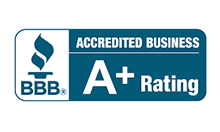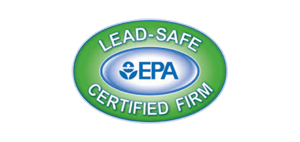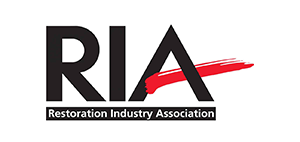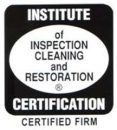A common invader could be hiding in your home. Mold loves damp, dark spaces, and it’s ready to harm your family and house. It grows silently, spreading where it’s moist and warm. This makes it hard to spot. But, finding and testing for mold is key to keeping your home safe. This includes doing mold detection and mold testing. These steps are vital for finding mold and keeping your family healthy. You might use home mold tests or ask for mold inspections. But either way, this guide will show you how to find and deal with mold.
Key Takeaways
- Spotting mold often requires a visual check for black spots in moisture-rich areas like shower grout lines.
- Simple home-based tests involving household bleach can help confirm the presence of mold versus mere dirt.
- A continual musty odor paired with allergy-like symptoms may indicate hidden mold within your home.
- Professional mold inspection services offer a more in-depth analysis for extensive or concealed mold issues.
- Maintaining vigilance for signs of mold can lead to early detection and easier remediation efforts.
Understanding Mold Presence in Your Home
It’s vital to spot mold in your house for a healthy space. Mold comes in many types, each with its own looks and effects on health.
Mold often shows up as dark, fuzzy areas on walls, ceilings, or floors. You might also see white or orange spots. Remember, mold isn’t always visible the same way; colors and textures can differ a lot.
- Detecting the musty smell: A damp, musty smell usually means there’s hidden mold. Pay special attention to spots like basements and behind walls.
- Health reactions: Being around mold can cause allergy-like symptoms. This includes issues like trouble breathing, a stuffy nose, and eye or throat irritation. With time, it could lead to more serious illnesses.
- Mold growth after moisture problems: Mold often shows up after a home gets wet from things like floods, leaks, or lots of condensation. In these situations, it’s crucial to test for mold quickly.
If you keep finding signs of mold, know that noticing them early is key. Take the necessary steps, which might include thorough testing and professional help, to make your home safe again.
Visual Inspection Methods for Identifying Mold
Finding mold in your home is key for a safe living space. By using good visual mold identification and surface mold detection techniques, you can check for mold yourself. These help you see the difference between mold and regular dirt, making it easier to manage.
One way to spot mold is by doing a spot test for mold. You mix one part bleach with 16 parts water. Then, you apply this on a suspected area with a swab. If the spot lightens quickly, it’s probably mold. No change means it might just be dirt.
- Prepare a diluted bleach solution following the ratio of 1 part bleach to 16 parts water.
- Apply the solution onto the suspected areas with a swab or cloth.
- Observe the reaction and note any immediate lightening of the area, which suggests mold presence.
Another way is to check moist areas with a tool. A screwdriver works well. This is great for finding mold on wood. If the wood is soft or crumbly, it could be moldy and damp.
- Examine under sinks, around windows, and in leak-prone places.
- Use a screwdriver to gently check the wood’s surface. Avoid unnecessary damage.
- Check if the wood is still firm; soft spots can be a sign of mold.
Additionally, looking closely for leaks helps prevent mold. Fixing leaks and improving drainage stops mold from growing. Moisture from leaks can make mold start and spread.
With these simple checks, you can find and understand mold. Knowing the difference between dirt and mold is crucial. It protects your home and the people living in it.
Spotting High-Risk Areas for Mold in Your House
Finding high-risk mold areas at home is key for a health-friendly space. This part will look at common spots that often get overlooked, leading to mold because of moisture problems.
- Plumbing Systems: It’s vital to often inspect pipes and icemakers to keep these places dry. This stops mold from growing there.
- Outdoor Leaks: Watch out for roof leaks and poorly sealed windows. These can help mold grow indoors and out. Fixing these leaks prevents mold.
- Ductwork: Check ducts for any water build-up, usually on the ones without insulation. This hidden wetness can grow mold inside the ducts. Keeping ducts dry is important.
It’s good to know these spots. Also, having a detailed mold inspection checklist is a must. Include checking places for dampness and odd smells, which could mean mold.
Knowing the difference between mildew and serious mold helps. This helps homeowners deal with mold problems early on. This way, they avoid big health risks and costly repairs.
“How to test for mold in your house?” The Step-by-Step Approach
Testing for mold is key for a safe home. Learn the best ways to find mold, from DIY mold test to professional mold inspection methods.
First, make sure you have safety gear. This includes goggles, gloves, and an N-95 mask. These help keep you safe from mold when testing yourself.
- Utilize DIY Mold Detection Kits:
- Buy a mold detection kit from a hardware shop.
- Read and follow the kit’s instructions. They often involve using swabs or scrapers to collect samples.
- If the kit says so, send your samples to a lab for analysis.
- These kits check the level of mold spores in the air.
- You take air samples and a lab does a detailed check.
- If you have a big house or think there’s hidden mold, pros can help.
- They check for visible mold, find where moisture comes from, and test the air for spores.
By including these methods in your mold checking, you make your home safer. Mold detection kits are a good start, while pros give a in-depth look when necessary.
Understanding the Differences Between Mildew and Mold
Knowing the difference between mildew vs. mold is crucial. Mildew looks like powdery black spots and mainly stays on surfaces. It’s easy to clean away. Mold, on the other hand, is made up of many different microscopic organisms. It can get deep into your house and needs tougher methods to remove.
Mold comes in various types. Some are slimy, others look fluffy and white. Recognizing these features is key to knowing how to get rid of them. The enzymes and spores from mold help it spread and break down materials like wood and wallpaper.
- Mildew shows up on damp surfaces and can be cleaned with the right product.
- Mold might need bigger solutions, like controlling moisture, and could require experts.
Both mildew and mold are part of natural recycling by breaking down dead stuff. Yet, in homes, they’re harmful. They can damage your house and cause health problems. It’s important to act fast when you see them. This keeps your home looking good and safe.
Conclusion
Keeping a healthy home free from mold is critical. It’s important to regularly check for mold and stop it early. This helps fix problems more easily and at lower cost. It also stops future mold issues.
Recognizing early signs of mold, like bad smells or visible spots, is key. So is knowing where mold grows. These are big steps to keep your home mold-free.
If you find mold, you need to act fast. You can try removing it yourself for small areas. But for big problems, getting help from experts is best. They can ensure a full clean of the mold. And quick action prevents more damage and cost.
In the end, beating mold in your home is about knowing, preventing, and acting. Find mold risks, prevent mold, and solve issues quickly. With this, your home will be a better and safer place to live.


















